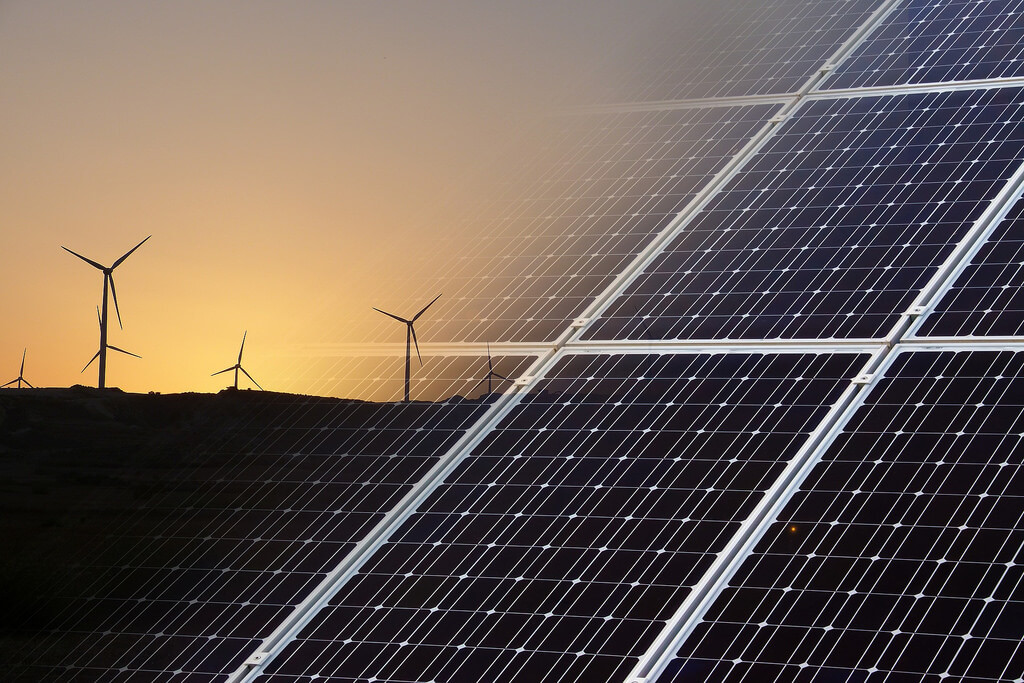The latest issue of the U.S. Energy Information Administration’s (EIA) Electric Power Monthly (with data through April 30) reveals that renewable energy sources – including wind, solar, geothermal and hydropower – are now providing a greater share of the nation’s electrical generation than nuclear power, according to a new analysis from nonprofit SUN DAY Campaign.
For the first third of this year, renewables and nuclear power have been running neck-in-neck, with renewables providing 20.20% of U.S. net electrical generation during the four-month period (from January through April) compared to 20.75% for nuclear power. Yet, SUN DAY says that in March and April, renewables surpassed nuclear power for the first time and have taken a growing lead: 21.60% (renewables) versus 20.34% (nuclear) in March and 22.98% (renewables) versus 19.19% (nuclear) in April.
Although renewables and nuclear are each likely to continue to provide roughly one-fifth of the nation’s electricity generation in the near-term, SUN DAY claims the trend line clearly favors a rapidly expanding market share by renewables: Electrical output by renewables during the first third of 2017 compared to the same period in 2016 has increased by 12.1%, whereas nuclear output has dropped by 2.9%.
In fact, the nonprofit says nuclear capacity has declined over the last four years – a trend which is projected to continue, regardless of planned new reactor startups. On the other hand, almost all renewable energy sources are experiencing strong growth rates. Comparing the first four months of 2017 to the same period in 2016, solar has grown by 37.9%, wind by 14.2%, hydropower by 9.5% and geothermal by 5.3%. Biomass has remained essentially unchanged – slipping by just 0.3%.
In recent years, the strong growth rates of both wind and solar have resulted in new records being set virtually every month. For the second month in a row, wind and solar combined provided more than 10% of the nation’s electrical generation. In March, those sources provided 10.04% of the nation’s electrical generation. That record was eclipsed in April, when wind and solar reached nearly 11% (10.92%) of total generation. And, for the first time, wind and solar combined have provided more electricity year-to-date (113,971 thousand megawatt-hours [TMWh]) than has hydropower (111,750 TMWh), according to SUN DAY.
As renewables’ share of electrical generation has grown, that of fossil fuels has declined. SUN DAY says electrical generation by fossil fuels (i.e., coal, natural gas, petroleum liquids and petroleum coke) dropped by 5.2% during the first third of 2017 compared to 2016.
“In light of their growth rates in recent years, it was inevitable that renewable sources would eventually overtake nuclear power,” notes Ken Bossong, executive director of the SUN DAY Campaign. “The only real surprise is how soon that has happened – years before most analysts ever expected.”
“Renewable energy is now surpassing nuclear power, a major milestone in the transformation of the U.S. energy sector,” adds Tim Judson, executive director of the Nuclear Information and Resource Service. “This gulf will only widen over the next several years, with continued strong growth of renewables and the planned retirement of at least seven percent of nuclear capacity by 2025. The possible completion of four new reactors will not be enough to reverse this trend, with total nuclear capacity falling by 2,806 MW (three percent) through 2025.”




